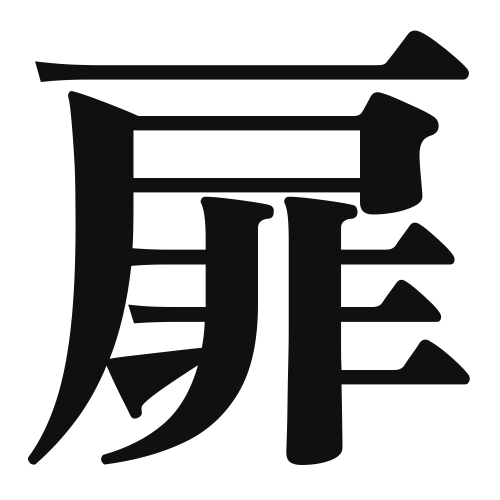1. Overview of Meaning
The kanji “扉” (tobira) means “door” in English. It refers to a movable barrier that allows entry or exit to a space, commonly used in buildings and rooms.
2. Formation and Radical
Formation of the Kanji: The kanji “扉” is a combination of two components. The left part “扌” (a variant of the radical for hand) suggests action or manipulation, while the right part “比” indicates comparison or a relationship. Together, they convey the idea of a door that can be opened or closed by hand.
Radical: The radical for “扉” is “扌” (hand), which is often associated with actions involving hands.
3. Examples of Usage
Common Words and Phrases:
- 扉 (tobira) – door
- 扉を開ける (tobira o akeru) – to open the door
- 扉を閉める (tobira o shimeru) – to close the door
Example Sentences in Daily Conversation:
- 「扉を開けてください。」(Tobira o akete kudasai.) – “Please open the door.”
- 「扉が閉まっている。」(Tobira ga shimatte iru.) – “The door is closed.”
4. Synonyms and Antonyms
Similar Kanji:
- 門 (mon) – gate: While “扉” refers to a door, “門” refers to a larger entrance or gate, often used for buildings or compounds.
Antonyms:
- 開 (kai) – open: This kanji represents the action of opening, which is the opposite of the state of a door being closed.
5. Cultural and Historical Background
Relation to Japanese Culture: In Japanese culture, doors symbolize transitions and new beginnings. They are often featured in traditional architecture, such as sliding doors (fusuma) in tatami rooms.
Proverbs and Idioms: One common saying is “扉を開ける” (tobira o akeru), which means “to open a door,” often used metaphorically to signify starting new opportunities or ventures.
